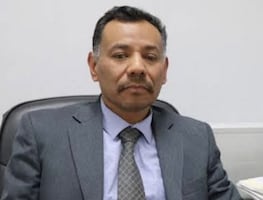Más Información

Asaltos e intentos de secuestro, estudiantes de la UNAM denuncian “deficiencia” de seguridad; exigen acciones concretas y urgentes

Marcha Nacional a 11 años de la desaparición de los 43 de Ayotzinapa; consulta aquí horario, ruta y alternativas viales

Manifestantes por caso Ayotzinapa irrumpen en Campo Militar 1; derriban acceso con camión e incendian vehículo

Juicio político contra Adán Augusto e Hilda Brown se estanca; Comisión Jurisdiccional debe resolver antes mil 200 casos atrasados

“Mis compañeros abusaron y descuidaban la puerta”; a 3 meses de la Ley Silla persisten problemas para su aplicación

Fiscalía de Tabasco trabaja en investigación complementaria contra Hernán Bermúdez; indaga a funcionarios y exservidores públicos
Sac Actun
, the largest system of underwater caves in the world, running 347 kilometers beneath Quintana Roo , is a time capsule that may house 15,000 years of history.
At least according to the most recent explorations of the Great Mayan Aquifer Project , which just last month revealed the total extension of the cave system.
Now, the team led by archeologist Guillermo de Anda brings us the news of their latest finding: human remains of at least 10, 000 years old . This discovery could shed some light on the first settlers of the American continent.
While the exact age of the remains hasn't been confirmed yet, De Anda says the caves “flooded around 9 or 10,000 years ago, so the [remains] have been there for at least 10,000 years.”
The archeologist of the National Institute of History and Anthropology ( INAH ) and explorer of the National Geographic Society claimed yesterday, during a press conference, that given the number of human remains found in those waters, they believe "there was a constant human interaction in the area, 10 or 15,000 years ago,” and added that the findings their explorations continue revealing will be key in reviewing theories about the origin of the first settlers of the Americas and on the ancient Mayan civilization.
“An immense underwater cave houses evidence of the first settlers of the Americas, which may extend for over a thousand kilometers more on southeast Mexico. I congratulate the experts of the @INAHmx who don't stop surprising us with their findings,” shared the Minister of Culture, María Cristina García, on her Twitter account.
am








